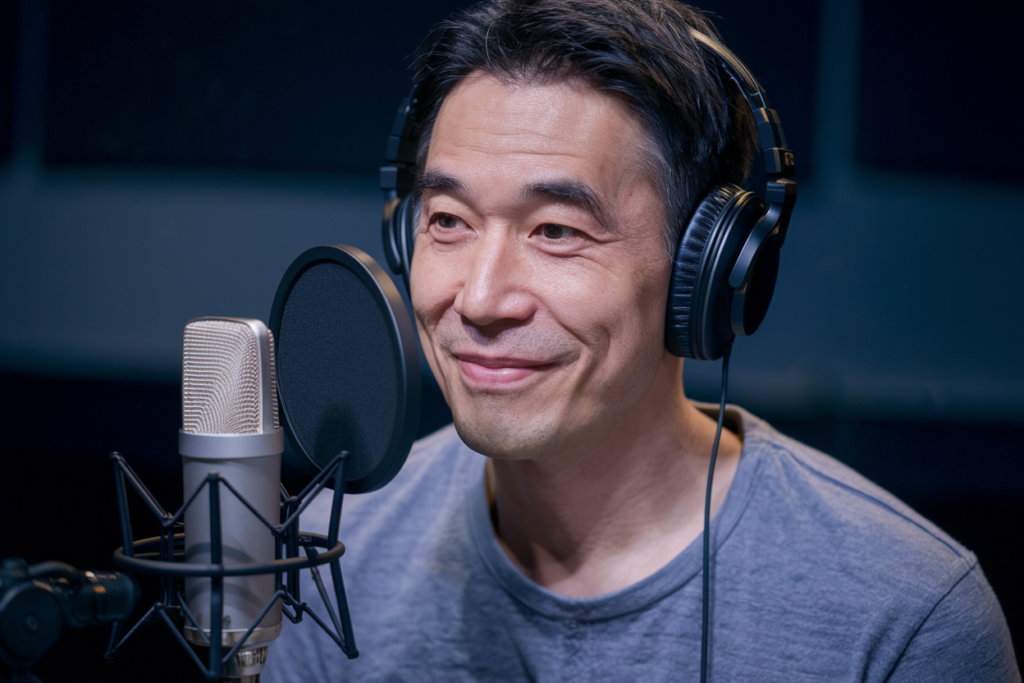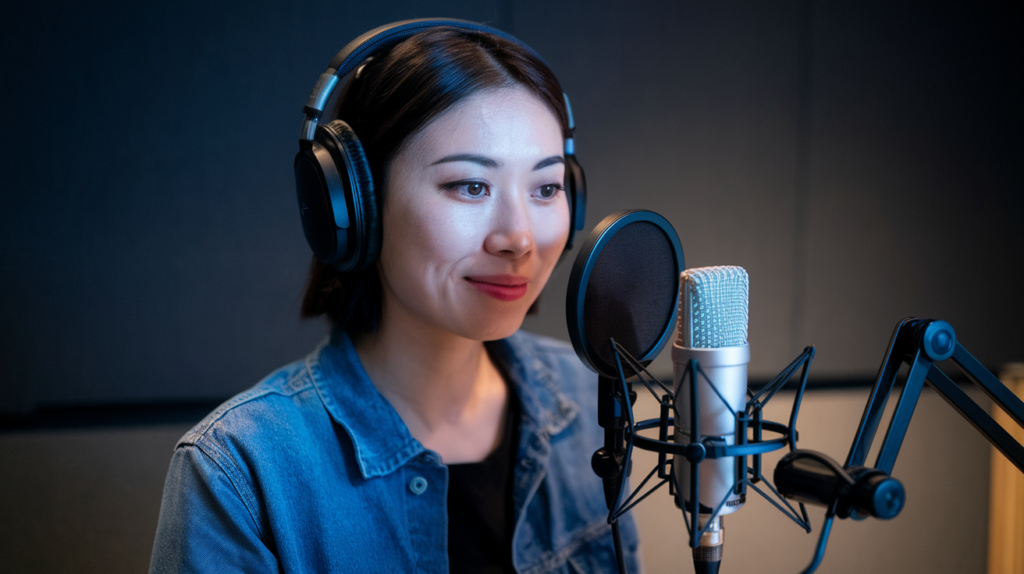Key Takeaways
- Japanese lip sync techniques emphasize precise synchronization and emotional expression, enhancing viewer engagement with characters.
- Voice actors play a pivotal role, infusing performances with depth and relatability that resonate strongly with audiences.
- The evolution of lip sync practices in Japan has been shaped by historical influences and technological advancements, particularly in animation.
- Current trends highlight the impact of technology on improving dubbing quality, meeting the growing demand for high-quality adaptations in streaming media.
- Audience appreciation for lip syncing reflects cultural values around storytelling, differentiating it from Western practices that prioritize straightforward accuracy.
Ever wondered why Japanese lip sync in films and TV often feels so different from what you see in Western productions? It’s a fascinating aspect of the entertainment world that can leave viewers curious about the artistry behind it.
Overview of Japanese Lip Sync
Japanese lip sync techniques differ significantly from those in Western films and TV shows. In Japan, the process often emphasizes precise synchronization between the voice talent and on-screen action. This meticulous approach enhances the viewer’s experience, making characters more relatable.
Voice actors play a crucial role in this artistry. Their performances aren’t just about matching words to mouth movements; they infuse characters with emotion and depth through voiceovers. Each voice artist brings unique skills to the table, resulting in distinctive portrayals that resonate with audiences.
In many cases, Japanese productions prioritize casting voice over talent who can convey complex emotions effectively, enhancing storytelling. This focus on emotional expression often leads to a stronger connection between viewers and characters.
Moreover, the cultural context influences how dubbing is perceived in Japan. Audiences tend to appreciate dubbed content that aligns closely with original performances rather than merely translating dialogue. As such, skilled voice over actors become pivotal in maintaining authenticity while adapting dialogue for local audiences.
Overall, understanding these nuances offers valuable insight into why Japanese lip sync remains an engaging element of their entertainment industry.
Historical Context
Japanese lip sync in films and TV has a rich history that reflects the nation’s unique cultural landscape. This practice evolved significantly, shaped by various influences over time.
Early Influences on Lip Sync Techniques
Early Japanese cinema was heavily inspired by Western films during the early 20th century. As sound technology advanced, filmmakers began experimenting with voiceover techniques to match dialogue with on-screen action. The arrival of synchronized sound in the 1930s marked a pivotal moment for Japanese productions. Voice talent played a crucial role in this transition, as actors needed to adapt their performances to align with newly introduced sound elements.
Evolution of Lip Sync Practices in Japan
Over decades, lip sync practices transformed alongside societal changes and technological advancements. In the post-war era, an influx of foreign films prompted local studios to improve dubbing quality. They sought skilled voice actors who could deliver authentic performances while maintaining emotional resonance with viewers.
The rise of animation in the late 20th century further revolutionized how lip syncing was approached. Anime demanded precise synchronization between voiceovers and animated characters, pushing voice artists to refine their skills dramatically. Today, the emphasis remains on casting versatile voice talent capable of conveying complex emotions through nuanced vocal expressions.
As you can see, Japanese lip sync is more than just matching words; it embodies a deep connection between performers and their characters that captivates audiences worldwide.
Current Trends in Japanese Lip Sync
Japanese lip sync continues to evolve, shaped by cultural nuances and technological advancements. Its unique artistry captivates audiences while setting trends that influence global practices.
Notable Films Utilizing Lip Sync
Several notable films showcase the intricacies of Japanese lip sync. For instance, animated features like “Spirited Away” and “Your Name” highlight how voice talent enhances storytelling. In these films, voice actors not only deliver lines but also breathe life into characters, making emotional connections seamless for viewers. Live-action movies such as “Your Eyes Tell” demonstrate the meticulous craft of lip syncing, where every word aligns perfectly with mouth movements. These productions exemplify the dedication to authenticity that defines Japanese cinema.
Impact of Technology on Lip Sync
Technology significantly impacts Japanese lip sync techniques. Advanced audio editing software enables precise synchronization between dialogue and visuals, enhancing viewer experience. With tools like digital pitch correction, voice artists can refine performances for maximum emotional impact. The rise of streaming platforms has also increased demand for high-quality dubbing—viewers expect flawless adaptations that maintain original intent while resonating culturally. As technology continues to advance, so does the potential for innovation in this area, pushing voice over talent to adapt and excel in their craft.
By understanding current trends in Japanese lip sync, you gain insight into an industry that values quality and authenticity at its core.
Cultural Significance of Lip Sync in Japanese Media
Lip sync in Japanese media carries cultural weight, reflecting the nation’s unique approach to storytelling. This artistry highlights not just technical skill but also a deep emotional connection between voice actors and their characters.
Audience Perception and Reception
Japanese audiences often embrace lip syncing as an integral part of the viewing experience. Viewers appreciate how voice talent breathes life into animated characters and live-action performers alike. Audiences expect voice actors to convey emotions that resonate on a personal level. A well-executed performance can enhance relatability, drawing viewers deeper into the narrative. When done right, it creates an immersive atmosphere where dialogue merges seamlessly with visual cues.
Comparisons with Western Lip Sync Practices
Japanese lip sync techniques differ significantly from those in Western media. In Japan, there’s a strong emphasis on matching emotion with vocal delivery; this fusion captivates audiences and enriches character portrayal. While Western productions often prioritize straightforward accuracy in synchronizing words with mouth movements, Japanese practices focus on depth of expression through skilled voiceovers.
Voice artists in Japan frequently undergo extensive training to master not only their lines but also the subtleties of emotional inflection needed for complex roles. This dedication results in performances that feel both authentic and engaging, setting them apart from many Western counterparts where dubbing may sometimes sacrifice emotional nuance for clarity.
Lip sync serves as more than just a technical requirement; it reflects cultural values around storytelling that resonate deeply within Japan’s entertainment landscape.
Conclusion
Japanese lip sync isn’t just a technical skill; it’s an art form that elevates storytelling. The emotional depth and authenticity brought by voice actors create immersive experiences that resonate deeply with audiences.
As you explore this unique aspect of Japanese cinema and television, you’ll appreciate the dedication to capturing nuanced performances. Whether through animation or live-action, the meticulous synchronization enhances not only character portrayal but also viewer engagement.
This cultural practice reflects a broader understanding of how sound can enhance visual storytelling, inviting you to dive deeper into the rich world of Japanese media. Embracing these techniques opens up new avenues for appreciating films and shows from Japan, revealing layers of emotion and artistry often overlooked in other cinematic traditions.
Frequently Asked Questions
What is the main difference between Japanese and Western lip syncing?
Japanese lip syncing emphasizes emotional depth and character portrayal, while Western productions often focus on straightforward accuracy. This results in a more immersive experience for Japanese audiences.
Why is voice talent important in Japanese films?
Voice talent in Japanese films plays a crucial role as they not only match words to mouth movements but also convey complex emotions, enhancing viewer connection and character authenticity.
How has Japanese lip sync evolved over time?
Japanese lip sync has evolved significantly since the introduction of synchronized sound in the 1930s. Influences from early cinema, foreign films, and advancements in technology have shaped its current practices.
What cultural factors influence lip syncing in Japan?
Cultural appreciation for authenticity and emotional storytelling influences how audiences perceive dubbing in Japan. Viewers expect voice actors to deliver relatable emotions that enhance narrative immersion.
Can you give examples of notable films showcasing Japanese lip sync techniques?
Films like “Spirited Away” and “Your Name” demonstrate exceptional use of voice talent to enhance storytelling through precise synchronization and emotional depth, captivating global audiences.







